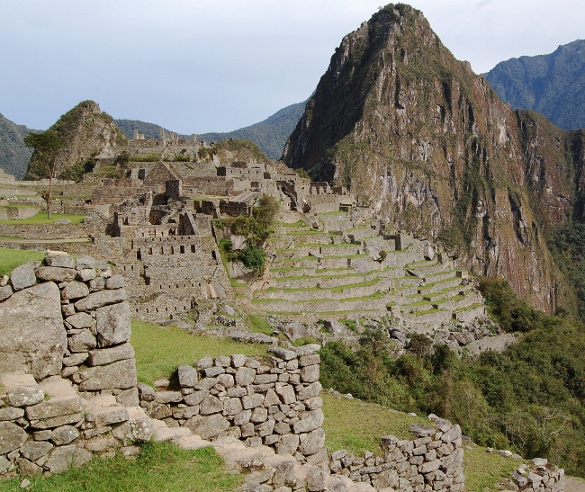What’s the first thing I should consider?
There’s no right or wrong answer here, but there are certainly items that take priority over others. Deciding on where to go and a budget seem to be the first things travelers think about when planning a RTW trip, and either are a good start.
I want to figure out where to go first. What should I do?
The best way to get started is get out a notebook or open a doc and start making lists. Are there any countries/cities/sites you’ve always dreamed of visiting? Write them down. Any particular experiences you’ve always wanted to have? Write them down.
Go to your local library and check out guide books (they may be old, but that’s OK-we aren’t worried about costs yet, which is the main downfall of older guidebooks) or head to your favorite travel websites and start reading. Research areas of the world you want to visit, and write them down.
Since I plan to travel for a year, I will be able to go everywhere. Why do I need to prioritize?
Ahhh, the biggest misconception that first time RTW travelers make is that they will be able to go everywhere.
Let’s keep it simple and throw out one big truth.
You won’t be able to go everywhere you want. Period. A RTW trip is not a vacation. Long term travel gets exhausting after a while, and moving fast and trying to see everything will wear you out very quickly. We’ve talked the LOTS of travelers over the years, and the biggest “thing they would have changed” about their trip is not to move so damn fast.
Just accept now that you’re going to have to make some decisions, at some point, about your itinerary, and you will have to cut something out.
Do I have to make firm decisions now?
Of course not. Your itinerary is most likely going to change dozens of times over the course of the planning process. The key in this stage of the game is to get a list of must-sees together, those places and experiences that you’ve always dreamed of seeing and doing, and make those the backbone of your trip.

How many must-see’s should I have?
It’s all subjective, but be aware that the more you have, the harder it will be to design your itinerary, and the more restrictions you will have. It’s probably wise to get a short list of must-sees (we like to call these the pillars of your trip) together and have a secondary list of places you really want to see but won’t be heartbroken if you miss.
The best mindset to have is that you will be able to see those places on a future trip.
I don’t have much money. Do I need to take that into account?
Yes, you do. Even though you probably don’t have a budget set yet (we’ll get to that soon), you may already know that you’re not going to be able to raise $10,000, or $20,000, or more for your trip. If this is the case, you do need to keep that in mind when crafting your list of pillars.
If the majority of your must-sees are in expensive to travel in regions: like Europe, North America, Australia, or New Zealand, it is going to be much more expensive. You should know this know so you can plan accordingly (there are still ways to see these places on a budget) or not be heartbroken if you end up not being able to go.
I don’t have much money, and many of my pillars are in expensive places. What should I do?
Everyone has to make tough decisions when planning a RTW trip, because as you know, you can’t go everywhere.
So you have to ask yourself, “Do I want to travel longer and sacrifice some of my must-sees, or make my trip shorter and experience all the places on my wish list?”
Or do you want to look into working on the road so you can raise some extra cash, while still traveling, in order to make all your pillars happen? Or do you want to delay your trip a year so you have the money available to take the trip you really want?
There are always options – it’s important to explore them all.
I’m more concerned with my budget. Can I start there instead?
Of course you can. The vast majority of us who take a RTW trip are pretty restricted with our budgets, so it makes sense to start there before choosing where to go. You can get by in India on $15 a day, but it’s a lot harder to do that in London in June. How much money you have will impact where you go and when.

Where do I even begin with my budget?
If you don’t already have a budget tracking your income and expenses, start now!
Open up a spreadsheet and start tracking all your bills and expenses. Or start an account on a budgeting site like Mint (it’s free) that makes it super easy to track where all your money is going.
I’ve never really done this before. How does it work?
Basically you need to figure out how much you’re spending each month vs. how much you’re bringing in. If you’re already spending less than you bring in, congratulations, this process will be much easier.
If not, then it’s time to really re-assess where you’re spending your money and figure out ways to cut back (or find ways to make more-preferably do both).
Once you’re at the point where you are spending less than you are bringing in, then you can really start planning. If you can save, let’s say, $1000/month, you will be able to save about $12,000 over the course of a year. That’s a great start.
If you can save more, bonus! If it’s far less, don’t get discouraged as there are still plenty of tactics to employ to make this trip happen.
Once I figure out how much I can save per month, then what?
There are still so many factors in play, but it’s all a matter of how soon you want to be on the road and how long you want your trip to be. Once you have a rough idea of how much you can save per month and when you want to depart, you can start thinking about destinations and prioritizing your must-sees.
Once you get the budget and your must-sees in place, it’s off to the next step of the planning process, Costs of RTW Travel
For more information about Where To Begin, including a checklist to keep you organized throughout the whole planning process, check out this article.
[more link=”https://www.bootsnall.com/rtw/faq-costs.html”]Next RTW FAQ-Costs of RTW Travel[/more]